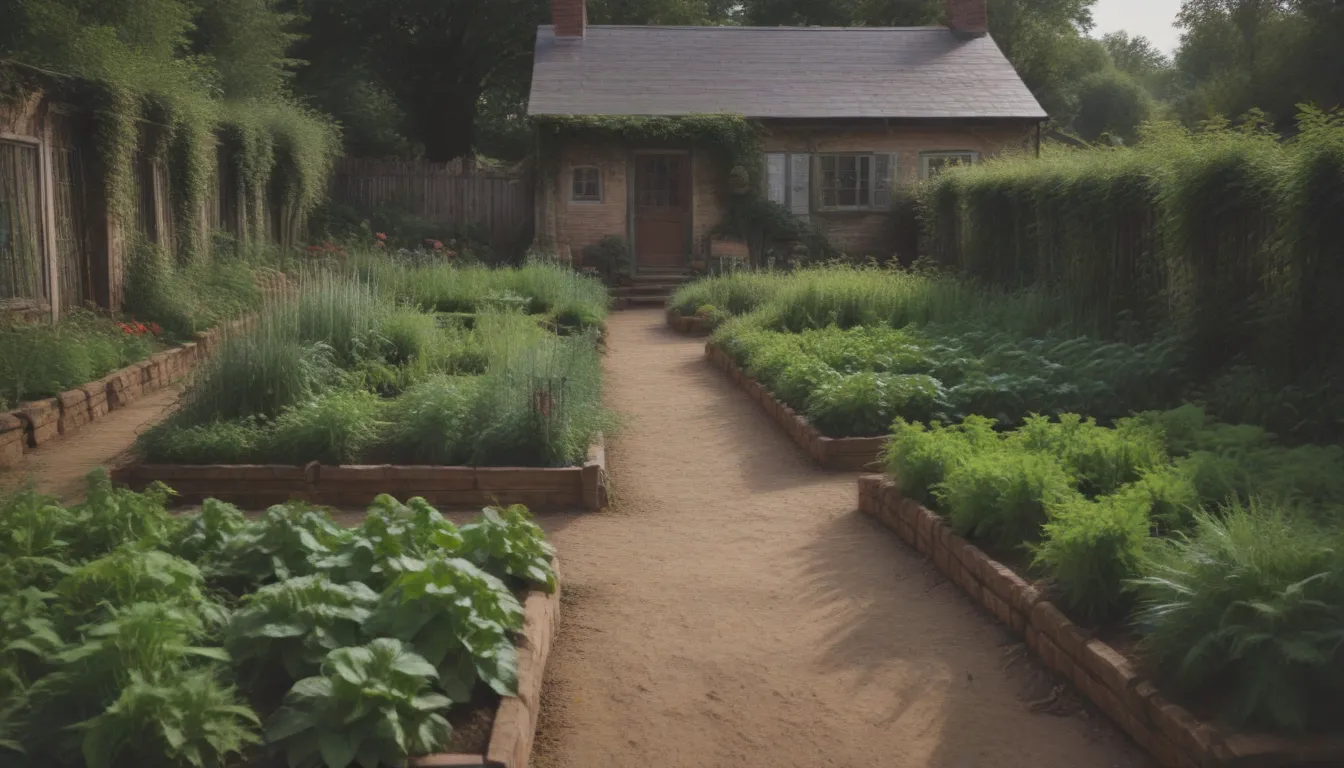The Ultimate Guide to Planning, Starting, and Maintaining a Kitchen Garden

Are you tired of making last-minute grocery store runs for fresh herbs and vegetables to spice up your meals? It may be time to consider starting your own kitchen garden. A kitchen garden is a small, functional garden tailored exclusively to growing vegetables and herbs for culinary use. It’s a convenient way to have fresh produce at your fingertips, straight from your backyard. In this comprehensive guide, we will explore how to plan, start, and maintain a thriving kitchen garden all year round.
Meet the Expert: Annette Hird
“Kitchen gardens are normally located conveniently close to the kitchen of the home or commercial premises like a restaurant,” says Annette Hird, a horticulturist and expert gardener at Easy Urban Gardens. “Most of the original kitchen gardens grew herbs because these could be harvested continuously just by snipping off a few sprigs here and there.”
If you’re ready to embark on your kitchen garden journey, here is everything you need to know to get started.
How to Plan and Start a Kitchen Garden
When it comes to planning your kitchen garden, there are a few key factors to consider:
- Space: Determine the available space for your garden and its proximity to your kitchen for easy access.
- Sunlight and Soil: Ensure that the spot you choose receives adequate sunlight and test the soil for its nutrient content.
- Companion Plants: Incorporate companion plants to maximize the success of your garden.
“Early spring is typically an ideal time to start your garden, but that can change depending on the type of plants you choose,” advises Hird. When planning your garden layout, think about the types of plants you want to grow and how they will fit into the available space.
Soil and Climate Considerations for a Kitchen Garden
Your climate, hardiness zone, and soil composition will play a significant role in determining the success of your kitchen garden. Consider the following:
- Climate: Choose vegetables and herbs that are suitable for your climate and can thrive year-round.
- Soil Testing: Test your soil to determine its pH level and nutrient composition, and amend it as needed.
- Compost: Add a layer of compost to enrich the soil and provide essential nutrients for your plants.
By understanding your soil and climate, you can create an optimal growing environment for your kitchen garden.
Choosing Raised Beds vs. Containers for Your Kitchen Garden
When it comes to container options for your kitchen garden, you have a few choices:
- Raised Beds: Ideal for areas with high-quality soil or limited space.
- Containers: Suitable for mobility and control over soil composition.
- In-ground Beds: Optimal for easily amendable soil and natural drainage.
Consider factors such as size, watering needs, and mobility when deciding between raised beds and containers for your kitchen garden. Each option has its benefits and considerations based on your specific needs.
What to Grow in a Kitchen Garden
The beauty of a kitchen garden is that you can grow what you love to eat and cook with. Consider planting a variety of herbs and vegetables that you frequently use in your recipes:
- Herbs: Parsley, thyme, basil, chives, cilantro, oregano.
- Vegetables: Tomatoes, cucumbers, beans, lettuce, kale, spinach, swiss chard.
“Your kitchen garden is yours to personalize, so choose plants that cater to your preferences and culinary needs,” recommends Hird.
Advantages of Growing a Kitchen Garden
- Fresh Produce: Access to freshly harvested produce without a trip to the store.
- Convenience: A smaller, more manageable garden that requires minimal maintenance.
- Customization: Grow herbs and vegetables tailored to your taste and cooking style.
A kitchen garden offers numerous benefits beyond convenience, giving you the opportunity to enjoy homegrown, nutritious ingredients in your meals.
How to Care for a Kitchen Garden
Maintaining a kitchen garden is relatively low maintenance compared to a traditional vegetable garden. Here are some tips for ensuring your garden thrives:
- Regular Harvesting: Harvest herbs and vegetables as needed to promote growth.
- Watering Schedule: Adjust watering based on plant needs and weather conditions.
- Fertilization: Feed your plants with slow-release pellets or liquid fertilizer to provide essential nutrients.
By staying on top of watering, harvesting, and fertilizing, you can keep your kitchen garden healthy and productive throughout the growing season.
Preparing Your Kitchen Garden for Winter
To extend the growing season into winter, consider these tips for protecting your kitchen garden:
- Covering: Use cold frames or protective structures to shield plants from snow and frost.
- Indoor Repotting: Bring sensitive plants indoors during winter months to ensure their survival.
- Winter-Hardy Varieties: Plant cold-tolerant vegetables like kale that can withstand frost.
With proper preparation, you can continue to enjoy fresh herbs and vegetables from your kitchen garden even during the colder months.
How to Protect Your Kitchen Garden From Pests
Pests can pose a threat to your kitchen garden, but there are steps you can take to deter them:
- Natural Deterrents: Use companion planting and natural pest repellents to keep pests at bay.
- Physical Barriers: Install fences or covers to prevent animals from accessing your plants.
- Regular Inspections: Monitor your garden for signs of pests and take action promptly.
By implementing pest prevention strategies, you can protect your kitchen garden and ensure a bountiful harvest.
In conclusion, growing a kitchen garden is a rewarding and fulfilling experience that provides fresh, flavorful ingredients for your culinary creations. By following the tips and guidelines outlined in this guide, you can plan, start, and maintain a thriving kitchen garden that enhances your cooking and nourishes your body. Start your kitchen garden today and savor the joy of homegrown produce right at your fingertips.





